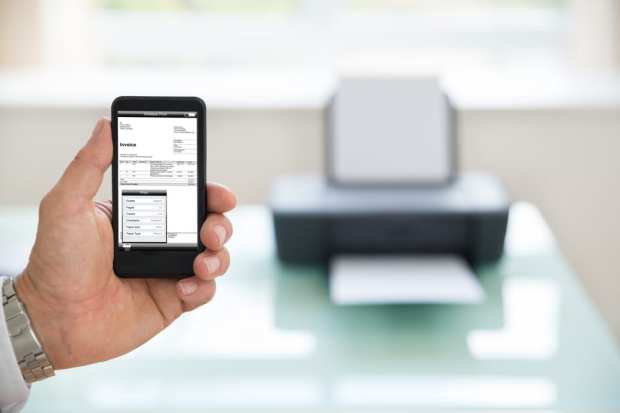What eInvoicing Standardization Could Mean For AP Automation

As the U.S. Federal Reserve continues to make headway in promoting faster and real-time payments innovation and adoption, the body is simultaneously exploring a less flashy, but perhaps no less important, initiative that could similarly impact the B2B payments landscape.
The Federal Reserve Bank of Minneapolis’s Payments, Standards and Outreach Group published a report in 2016, “U.S. Adoption of Electronic Invoicing: Challenges and Opportunities,” which explored the potential for the U.S. to embrace eInvoice standards in an effort to achieve end-to-end efficiency in the U.S. payments system.
“A major barrier identified by U.S. businesses to adopting electronic payments is the willingness of their trading partner’s ability to send or receive automated electronic information (e.g. invoice and remittance information),” the Fed summarized, adding that while a company may embrace electronic B2B payments independent of its ability to send and receive electronic data, the lack of eInvoicing often leads a business to continue reliance on the paper check.
Electronic invoicing, the Fed noted, is a key step in enabling straight-through processing (STP) of B2B transactions, in which an organization can receive an electronic invoice, automatically integrate that information into their back-end systems, process it, approve of it, and initiate payment — all without the need for human intervention.
Years since the Fed first published its report, however, the U.S. has not achieved invoice standardization. That’s a major problem for businesses looking to improve their accounts payable operations, says IPS President and Chief Executive Officer Greg Bartels.
“The problem for U.S. accounts payable departments is that the country has no standards for how suppliers should submit invoices,” he told PYMNTS in a recent interview, adding that IPS is currently collaborating with the Fed in its ongoing efforts to establish such standards. “But they are still a long way off,” he noted. “Without standards, accounts payable departments can never be sure of the format in which they will receive supplier invoices.”
A FinTech Opportunity
While the market awaits for regulators to tackle the issue, FinTech has identified the eInvoicing conundrum as an opportunity for innovation — and a chance for technologies like machine learning and artificial intelligence to step in. Such technologies are able to analyze data from a document regardless of format or method of presenting that information, and automatically input that data into the necessary back-end systems.
While in theory technology makes this possible, the reality, said Bartels, is quite different.
Instead, a significant portion of companies continue to receive paper invoices, and even as suppliers digitize, invoices submitted via email are often no more efficient than physical documents.
“Many people mistakenly believe that invoices that arrive via email are electronic invoices,” he said. “This couldn’t be further from the truth.”
Often, accounts payable (AP) professionals will print out an emailed invoice, or require two desktop monitors in order to manually key data from an emailed invoice into their systems. Adding to the complexity is the need for both buyer and supplier to have integrated systems, allowing for vendors to submit invoices that automatically land in the correct place — an infrequent achievement in today’s landscape, in which AP departments often lack visibility into the status of any given invoice, Bartels noted.
A Long Road Ahead
The consequences of a lack of eInvoice adoption and straight-through processing capabilities are vast, including resulting in a higher risk of delayed supplier payments, inaccurate processing and payments, missed opportunities for early payment discounts and a lack of working capital visibility for finance executives.
Those are tall hurdles to overcome at a time when CFOs are demanding digitization, automation and optimization in order to reduce costs, take advantage of those early payment discounts, obtain rebates via commercial card payments, extend days payable outstanding (DPO) and mitigate the risk of fraud, as Bartels explained.
That means greater opportunity for FinTechs to address these friction points with technologies that can support automated data capture and entry of invoices even when they’re sent via email, like IPS’s latest addition to its Productivity Wrx platform, a straight-through processing function that supports invoice capture when sent via email, file transfer protocol or through a supplier portal.
Still, regulation will become an important part of supporting organizations’ AP automation journeys. The same might be said for the Fed’s faster payments efforts, too: according to Bartels, continuing use of checks means faster payment networks won’t necessarily have a major impact on B2B payments yet, though the more ePayments adoption among corporates, the greater likelihood that faster payments will offer an additional way for businesses to optimize their transactions.
In the meantime, technology will be key to tackling friction, and Bartels said there is not a single silver bullet for challenges in this arena.
“We don’t believe that any one technology will have an outsized impact on the accounts payable function over the next year,” he said. “Instead, we believe that more businesses will recognize that these technologies are just another tool — along with established technologies such as intelligent data capture, business intelligence and mobile — that they can use to transform the way they process invoices and pay suppliers.”